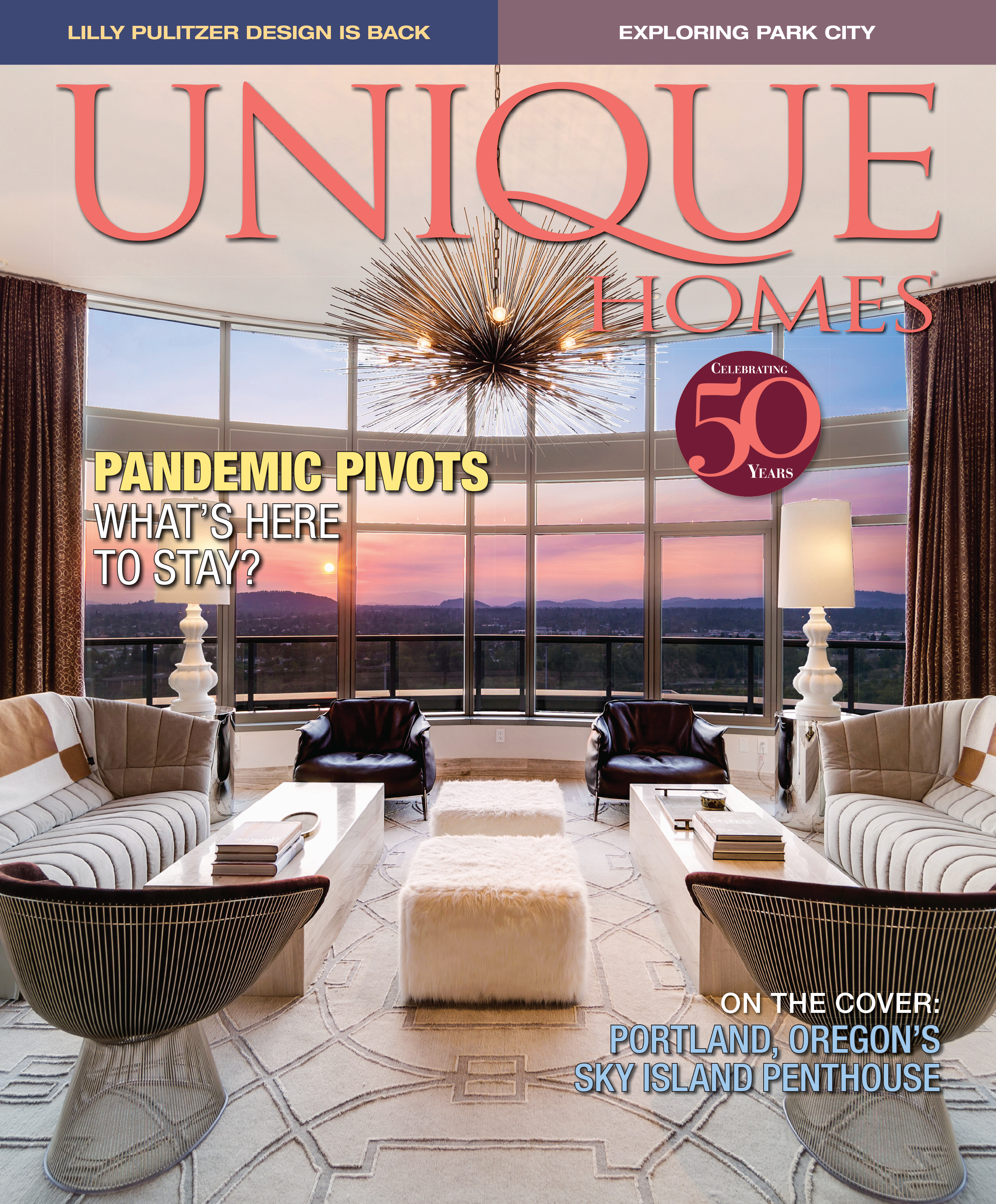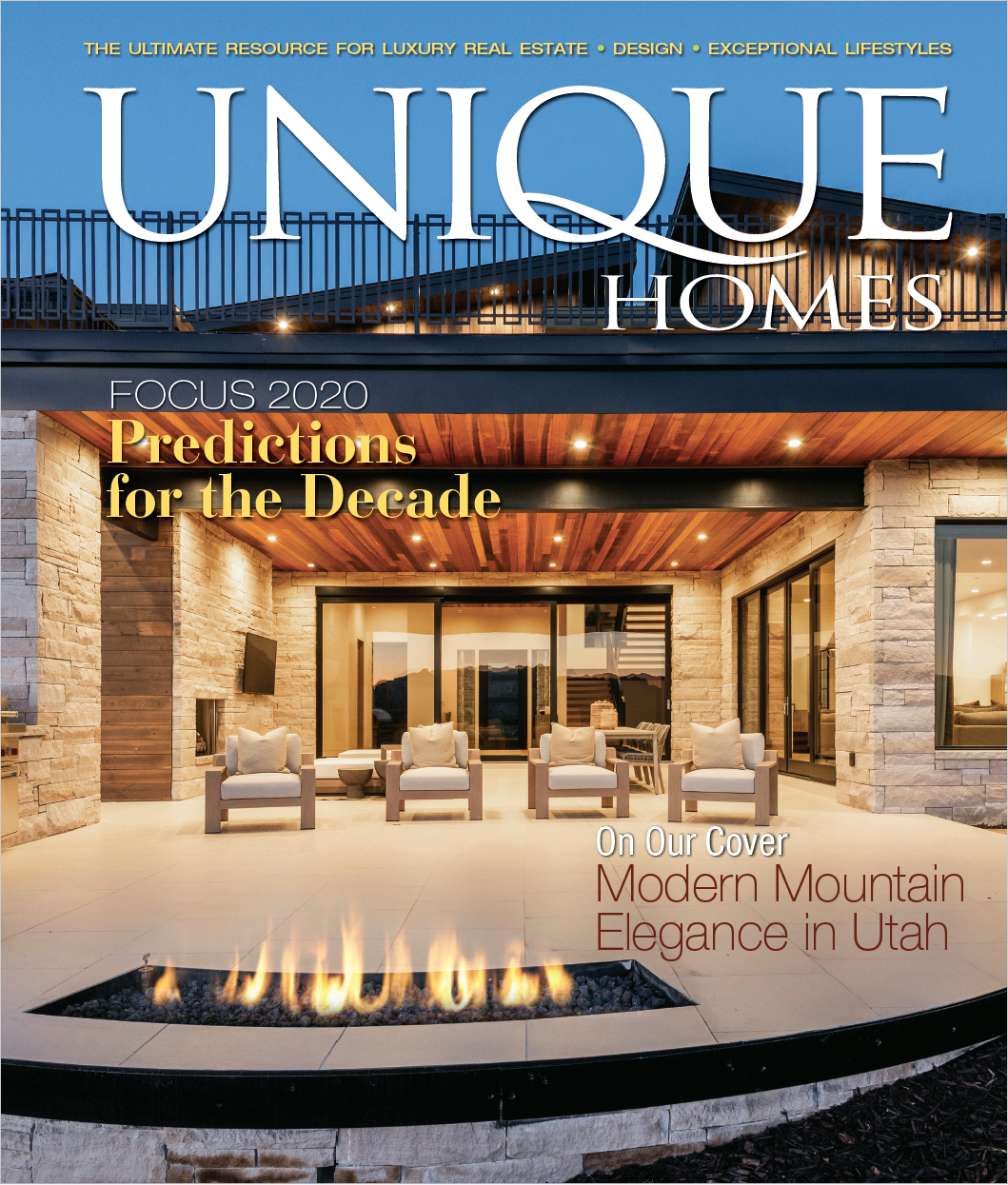Cover photo ©istockphoto.com / Evgeny Zhigalov
Of all the changes brought on by the pandemic, what is here to stay?
From a drone’s eye perspective of 50 years, real estate might resemble a Mobius strip, a never-ending roller coaster of ups and downs with each boom-and-bust cycle sparking small changes and adaptations. But none have had an impact comparable to the pandemic, which ushered in an avalanche of innovation, new ways of doing business and a profound shift in consumer values. Some effects are a temporary response, while many reflect a significant transformation.
“The way that real estate as an industry operates has changed, and I believe it is a microcosm that can be applied to 90 percent of the economy out there. No one is going back, and that means the way we live, work and play changes forever,” observes Marci Rossell, former CNBC chief economist and chief economist for Leading RE. “COVID drop-kicked us into 2030.”
Ask agents if any prior cycle compares to the experience of the last year and a half, and they will tell you the pandemic boom is unparalleled. “I don’t think any Realtor in the country has had the experience we’ve had this last year! Yes, there have been good upticks in certain years in certain places, but never anything like this!” shares Trinkie Watson with Chase International in Lake Tahoe.
“We’ve certainly seen periods where you had to pivot skill sets and be really aware of the market and things that would impact clients, but we’ve never seen anything like the last year and a half, (and) that’s been compounded by a lack of availability,” shares Tami Simms, with Coastal Properties Group in St. Petersburg, Florida, who is also trainer for the Institute for Luxury Home Marketing.
“I think that last year was the most significant year of change from a tech perspective,” says David Marine, chief marketing officer at Coldwell Banker Real Estate. The pandemic market accomplished what major brands had been working on for years. “In 90 days,” he says, “every single real estate agent figured out a way to move the transition online. Now it’s commonplace. It’s no longer an issue.”
“Agents basically skyrocketed 10 years into the future, and they did it in a two-month period,” says Rossell. Rather than an abrupt switch, industry experts see real estate’s seemingly overnight embrace of new technology as acceptance of tools already available. Think of it as “escalating trends that were already underway that would have happened, but they are going to happen almost a decade faster than anyone expected,” explains Rossell.
Will it be a virtual world?
Prior to what Simms dubs “the Zoom age,” she says, there wasn’t a widespread understanding or trust or proficiency with virtual apps. “Now,” she says, “we know how to use it. We’re reasonably proficient at it, and there’s a level of trust. So, we’re able to embrace this technology. You know I don’t ever want to go back to having to communicate with out-of-state buyers purely by telephone.”
Virtual Sales are touted as the main advancement sparked by the pandemic, but an even greater benefit has been an industry-wide recognition and adaptation of virtual apps to enhance and expedite the process from initial views of a property to consumer education. “FaceTime is an effective tool, but really more to give a prospect a better idea of the home, not to induce an offer … though it could,” says Watson.
Looking ahead, agents don’t expect virtual sales to disappear, but they will continue to be a rarity. “I don’t think we’ll see many escrows where the buyer hasn’t physically seen the property. Yes, Zoom and similar will continue to be a part of our lives. Also, more defined photography for our listings … the importance of a comprehensive ‘walk through’ so prospects can get a good feeling for how the house flows,” says Watson.
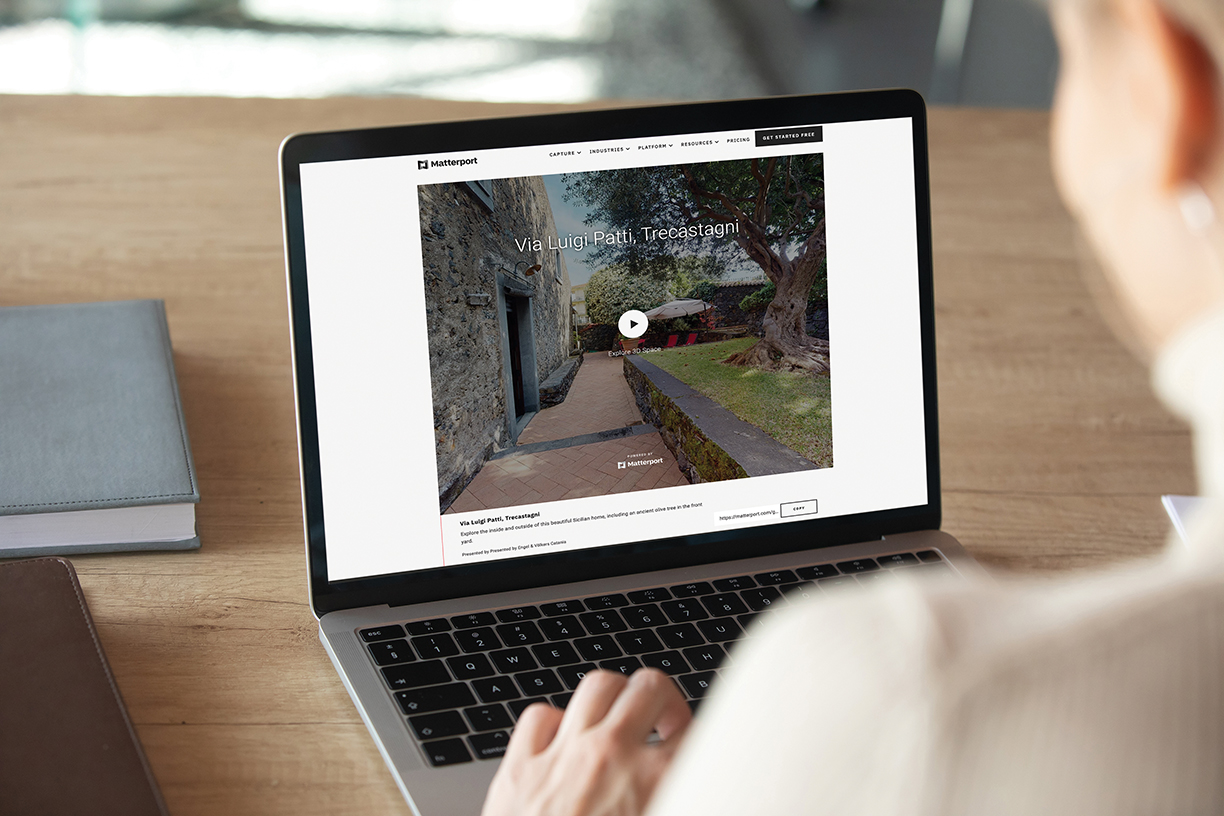
Detailed virtual walk-throughs became more important than ever, with platforms such as Matterport leading the way.
©istockphoto.com / fizkes
“In-person viewings have been very limited. No one wants to go to open houses. No one is walking about a house just for fun. People are looking online. They are viewing the pictures of a listing maybe 10 times before they see a house. So, a showing is more like a fourth showing, and agents need in-depth knowledge of a property,” says Joanne Nemerovski, with Compass in Chicago.
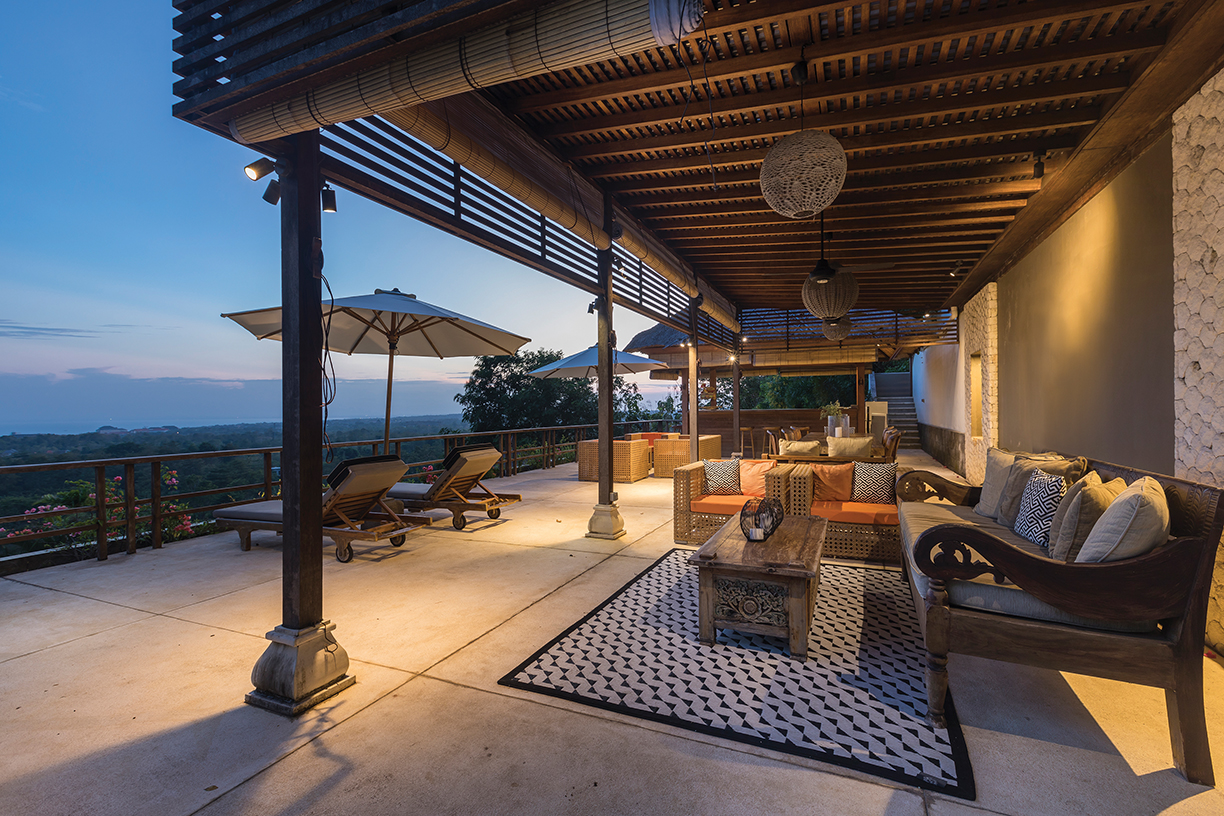
©istockphoto.com / joakimbkk
Dreaming of Home
The ability to work remotely is often cited as the main driver for the surge in sales, but even more fundamental are new consumer values regarding home and lifestyle. Citing millennials, who now comprise a substantial portion of buyers, Nemerovski says many were starting careers and literally were never home, so home basically was a shoebox they visited. “I think that sentiment has changed. Home is where the heart is. It has become the center of people’s lives. People are also more respectful of their homes.”
Everybody wants their dream home,” says Frank Aazami with Russ Lyon Sotheby’s International Realty in Scottsdale, Arizona, “because they just cashed out of another home that maybe they inherited or maybe were there for 20, 30 or 40 years.”
Buyers’ expectations of quality are high and will continue to be so. “People understand the level of finishes better than ever before. We’ve gotten so much better with respecting architects, good architects’ work, good designers’ work,” he says.
“All of a sudden, consumers are finding that now it’s not all about a commute. It’s about ‘does the place that I live offer me the things that I want to do when I have a little extra time, both inside and outside.’ Outside spaces have always been a luxury item, but more so now than ever,” says Simms. Topping wish lists are beautiful recreational facilities, inside and out. Also becoming more desirable is access to nearby outdoor venues such as parks and trails. Before COVID-19, outdoor living was a growing trend; now a connection with nature has become almost an essential for homes, particularly new construction.
Skills Put to the Test
With properties selling days or hours after going on the market and multiple platforms broadcasting new listings, it would seem agents’ skills are not essential. However, the pandemic market has proved the opposite. “It’s been a really intense time for real estate professionals in terms of making sure that their communication skills are absolutely the most important thing that they have, setting expectations, both on the seller side and the buyer side,” says Simms.
“There’s more attention to vetting prospective buyers, making sure they are qualified to buy before showing them property,” adds Watson.
Price is only part of an offer’s appeal to sellers, and crafting a winning offer has been an important skill for agents and buyers in the current market. Even when multiple offers become less of the norm, this aspect of buying will continue to be important.
An intense market tempts buyers to forgo contingencies. “It has been definitely challenging to counsel people on strategies to be successful in acquiring properties, but also in making sure that they truly understand the ramifications of releasing contingencies and know the risks they are taking on,” shares Simms.
“A downside of the intensity has been buyer’s remorse, cancellations before closing, some attempted lawsuits … a result of no inspections, jumping too fast without thorough exploration, et cetera. This would be a small percentage of the purchasers, but certainly a reflection of ‘herd mentality’ going the wrong way!” says Watson, referring to the pressure buyers felt to make a decision.
Cooldown Ahead
With days on market hovering just over 14 in July, prices rising in 99 percent of all metro areas, and double-digit price increases in 94 percent of metros (according to NAR), the current pace might seem no less fevered. Still, indications of a transition are beginning to filter out from a number of locations. Days on market are increasing ever so slightly, and overblown prices are being reduced. Or, as Katie Treem at Keller Williams Realty in Portland, Maine, explains, it might be that a property receives 20 offers instead of 40. “We’re still seeing people moving from New York, Boston, Connecticut and D.C.,” she says.
Also, agents like Treem are just beginning to see a few who bought in 2020 reselling. Sometimes they improved the property, but in others, decided the lifestyle was not what they desire or the commute, even for occasional days in the office, was too difficult.
In Tahoe, Watson says, “I believe the intensity has certainly calmed down, and I suspect very few listing agents will accept an offer from a buyer who hasn’t physically viewed the property. That goes for waived inspections … I’d be surprised if many are doing that any longer.”
No Bubbles Here
Bubble talk has become almost a perennial for real estate, but experts such as Rossell do not subscribe to this characterization of the market. Rossell says, “It’s not a bubble. It’s simply real demand bumping up against severe supply constraints. But this doesn’t mean house prices continue to go up. But what it does mean is you’re very unlikely to see the bottom fall out of the market, the way that you did in 2007, 2008.
“September 11 forever changed the way that we thought about terrorism. And I think in the same way, the first round of COVID in March of 2020 forever changed the way that we thought about public health, and pandemics. I think we’re all going to be living with the reality that at any given time something like this could happen, just like terrorism.”

Days on market are increasing, and overblown prices are being reduced. It might be a property receives 20 offers instead of 40, says Katie Treem at Keller Williams Realty in Portland, Maine.
©istockphoto.com / sara_winter
This story originally appeared in Unique Homes Fall ’21. Click here to see the digital version.

©istockphoto.com / Jirsak
The luxury real estate outlook for the coming decade includes understanding millennials and dealing with low inventories.
A new year and a new decade prompts pundits to dust off crystal balls and prognosticate on what’s ahead. But experience teaches us that vision is not always in focus.
To illustrate her perception of luxury in 2020, Stephanie Anton, president of Luxury Portfolio International, points to Pantone’s color of the year, a classic blue symbolizing protection, sustainability, peace and confidence. “That’s exactly how I feel about the market. It’s going to be a peaceful year, solid, with nothing dramatic happening.”
Others might agree with Julie Leonhardt LaTorre, COO for Sotheby’s International Realty Affiliates, who says, “The U.S. luxury property market has never been as exciting as it is today. While certain real estate markets are currently experiencing some softening, others are seeing an uptick in sales.”
“It’s a time of change,” says Craig Hogan, vice president, Coldwell Banker Global Luxury. In hindsight, there is a good chance 2020 will be viewed not as a year of spectacular sales or an unusually strong market, but rather as pivotal — the year in which millennials became real estate influencers, sparking a transformation more significant and substantive than simply sales or the number of transactions. The turnover from baby boomers to millennials will take more than a decade to complete and will impact all facets of real estate from design to communication to how transactions are conducted.
Looking Back
When the last decade began, there was only one certainty for real estate: we were in a recession, perhaps the worst crisis since the Great Depression. Tentative hints of a recovery arrived with the new year, but as the decade unfolded, it was clear the worst was not over. “Bumping along the bottom” became a catch phrase to characterize the long, slow recovery. By decade’s end, almost all markets were back to or had surpassed pre-recession values. A few became hot markets with a surge of new residential property and skyrocketing values followed by another period of adjustment. Many others bounced by and remained hot markets through the end of the decade. By early 2019, the possibility of another downturn loomed as some economists and housing experts bet a recession was waiting in the wings.
Today, a few clouds hover over some forecasts, but expectations are the economic expansion, the longest in history, will continue. Jobs, the economy and continued low interest rates continue as positives. For real estate, the year ended on an upbeat as markets revived in the second half. Still, a lack of inventory continued to hamstring sales with only a 3.9-month supply of homes on the market at the end of October, down from 4.3 months recording October 2018. Noting that residential construction is still under-building to meet demand, Rover Dietz, NAHB chief economist, points to higher development costs, which, he says, “are hurting affordability and dampening more robust construction growth.”
The median existing-home price for all housing types in October was $270,900, up 6.2 percent from October 2018. October’s price increase marks almost eight years, 92 straight months, of year-over-year gains.
The probability of a recession in 2020 is 29 percent, according to 14 housing economists and experts gathered by the National Association of Realtors (NAR) in December for a forecast summit. They project a 2.0 percent increase in GDP in 2020 and 1.9 in 2021. Annual median home prices are expected to increase by 3.6 percent in 2020 and 3.5 percent in 2021.
“Real estate is on firm ground with little chance of price declines,” said NAR’s Chief Economist Lawrence Yun. However, Yun cautioned that lack of inventory, not enough for sale homes to meet demand, was still a detriment. “In order for the market to be healthier, more supply is needed to assume home prices as well as rents do not consistently outgrow income gains,” he explained.
Year-end bought more positives with an increase in builder confidence for single-family construction, the highest point since June 1999, according to the National Association of Home Builders (NAHB)/Wells Fargo Housing Market index. “Builders are continuing to see the housing rebound that began in the spring, supported by a low supply of existing homes, low mortgage rates and a strong labor market,” said NAHB Chairman Greg Ugalde, a home builder and developer from Torrington, Connecticut.
New Markets to Watch
In recent years, a big change has been the migration of luxury to secondary markets such as Denver and Houston. This year, Jacksonville, Charlotte, Nashville, Cincinnati, Boise, and Kansas City were added to the luxury orbit, according to the Institute for Luxury Home Marketing.
Looking ahead, John Brian Losh, chairman and publisher of LuxuryRealEstate.com, believes that all of the fundamentals for a positive year for real estate are in place. “I think nationally it couldn’t be better. The economy is booming. It’s an election year, and people don’t want to raise taxes during an election year. It’s rare to have a slowdown during an election year. The luxury market is all about consumer confidence. If confidence is high, the market will stay strong.”
Still, some media reports portray luxury sales in freefall, particularly from Manhattan, which is finding new ground after a mid-decade surge in prices, or L.A.’s tony Westside enclaves, where a spate of speculative development pushed prices to unjustified levels. Yet, Manhattan and Beverly Hills both posted sales that set record prices in 2019.
I think nationally it couldn’t be better. The economy is booming. It’s an election year, and people don’t want to raise taxes during an election year. It’s rare to have a slowdown during an election year. The luxury market is all about consumer confidence. If confidence is high, the market will stay strong.
“What’s interesting is what we’re hearing and feeling is not as bad as we hear in the media,” shares Anton, following a recent two-day summit with 15 leading brokers.
Something Meghan Barry, president at LuxuryRealEstate.com, has heard this year from more than a few agents is they are having their best year ever.
While Anton agrees “there is definitely a softening in luxury generally,” she also points out, “There are bright spots. It’s not a horror story. Things are flat year over year, and as we look to the coming year, we think it’s going to be the same.”
Lesli Akers, president, Keller Williams Luxury International, sees the growth of inventory as a positive. “We’re starting to see more supply and we need to. It’s not moving into a buyer’s market. It’s moving more into an adjusted market. I think the luxury market is strong now.”
Heading into 2020, there are also a number of encouraging indicators for luxury from a continued vibrant global market to a surge of demand for second-home and resort properties. “With the creation of new wealth around the world, cities like New York City, London and Dubai, just to name a few, will continue to thrive in the luxury arena,” says Johnson.

London
©istockphoto.com / sborisov

Tokyo
©istockphoto.com / tawatchaiprakobkit
“We have been seeing a strong increase in demand in Dubai’s super-prime segment, with transaction volumes increasing by 81 percent year-to-date in the second quarter, compared to the same period last year. The mainstream market over the same period saw a 2.2-percent decline, although since then the wider market has seen increased transaction volumes, increasing 11.1 percent year-to-date in August over the same period last year,” says Dounia Fadi, chief operating officer, Berkshire Hathaway HomeServices Gulf Properties.
“Some of the hot markets that are emerging globally are Canada, Japan, Portugal and New Zealand,” says LaTorre. “Canada continues to generate strong interest. Specifically, Vancouver, which is steadily regaining momentum, experiencing the greatest gains in year-over-year employment growth among Canada’s three largest census metropolitan areas, so confidence in the city’s fundamentals remains high. There is a strong focus on Tokyo, especially with the Olympic games in 2020. It’s currently on a world spotlight.”
In London, prices are down, and the general property market has slowed. But the luxury market, which Martin Bikhit, managing director at Berkshire Hathaway HomeServices Kay & Co. describes as “certainly bottomed out,” is reviving with buyers returning to the market. It’s still a buyers’ market, which creates new opportunities for investors and foreign buyers. Bikhit sees Americans and others from countries with currencies pegged to the U.S. dollar taking advantage of prices and exchange rates offering savings of 45 percent compared to the 2014 market peak.
“International buyers are using the currency play to their advantage and timing their investments accordingly. Therefore, we are seeing a number of international buyers looking to buy in the UK,” says LaTorre. And, she adds, “we’re still seeing foreign interest in the U.S. luxury market.”
Hot luxury locales this year were resort markets, and the passion for get-away properties or the new family gathering spot is not expected to change soon. “The preferences of the consumer have changed dramatically. We’re seeing wealthy millennials are particularly interested in purchasing second homes,” says Anton.
Tax policies also came into play this year in a big way and expectations are they will continue to shape demand and bring more interest to low tax states such as Texas and Florida. Expectations are taxes and government policies will remain motivations for buyers. “The weather, the climate and taxation have a lot to do with where people move, especially in this economy,” says Losh.
Not only are more consumers migrating to lower tax states, but Hogan says an increasing number of agents are licensed in two states such as Illinois and Arizona or New York and Florida. “We have always had people with dual licenses. Now we have agents who have established a presence and market themselves as having offices in two locations.”
Many are also revising their acquisitions too. “People are looking for multiple small properties instead of one large property,” adds Anton.
In the last year and a half, both Coldwell Banker Global Luxury and Luxury Portfolio International conducted research into millennial attitudes and the potential influence of this cohort on luxury market. “The buyer pool has changed. In the luxury space, we’re now faced with people with different expectations, different styles of communication and different experiences,” Hogan says.
Already evidence of the transition from boomers and Gen X to millennials can be seen. By spring 2020, millennials will account for more than 50 percent of all mortgage originations, according to George Raitu, senior economist at Realtor.com. By 2030, Wealth Engine and Coldwell Banker Global Luxury estimate millennials will hold five times as much wealth as they do today.
Currently, the number of wealthy millennials in the luxury market may be small, but they are extremely influential. For one thing, Hogan says, they are buying more real estate than their parents. “They own an average of three homes, while their parents own an average of 1.4, and they’re spending more money.”
Overall, millennials are defying earlier predictions by starting families, moving out of urban neighborhoods and owning cars. What’s ahead is uncertain, but agents and brands are preparing for dramatic changes in the industry overall.
THIS ARTICLE ORIGINALLY APPEARED IN THE WINTER 2020 ISSUE OF UNIQUE HOMES. TO SEE THE DIGITAL VERSION OF THIS STORY, CLICK HERE.
Starting January 25, 2020 is this year’s Chinese New Year, the Year of the Rat, associated with such characteristics as wealth, cleverness, creativity and midnight hours.
If your looking to freshen up your interior style, perhaps its time to ring in the new year with some Chinese New Year-inspired design tips and tricks. From oriental furniture and art to luxurious fine finishes, you can find all the inspiration you need to start this new year right!
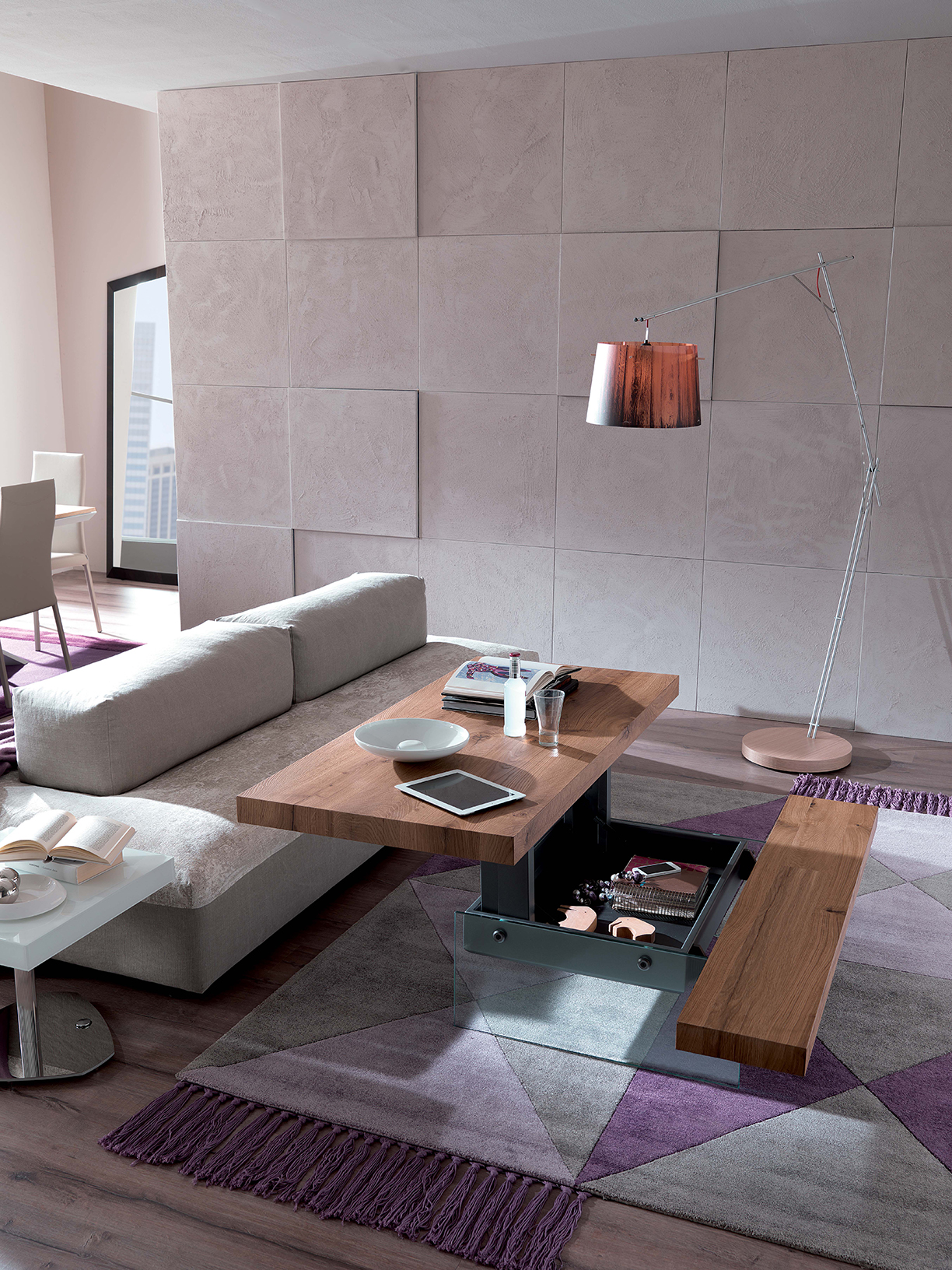
Clever Finds
In Chinese Zodiac culture, Rats are clever, quick thinkers; what a way to reflect that in terms of furnishings! The best way to reflect this choice is through pieces that serve multiple purposes.
Take the Markus Multi-Functional table, designed by Marco Pozzoli, which features a gas-powered structure that lifts and divides, quickly transforming it into a comfortable desk/table with extra bench seating and generous proportions — a superb home-office desk or dining table.
Or even these beautiful Urban Chic nest of tables. The tables slot inside each other to minimise the amount of space taken up when not in use.
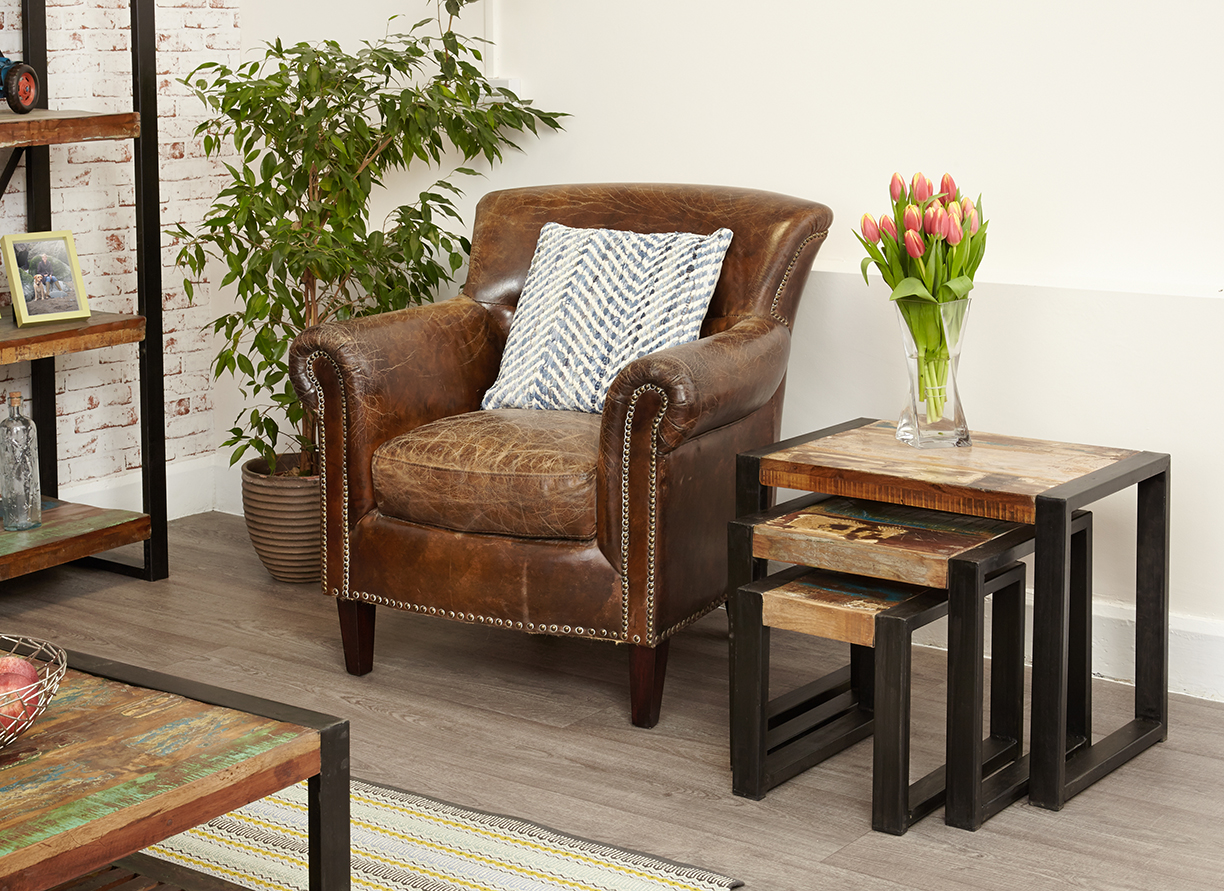
At Left: Markus Multi-Functional table.
Photo courtesy Go Modern Furniture.
Above: Urban Chic nest of tables.
Photo courtesy Wooden Furniture Store.
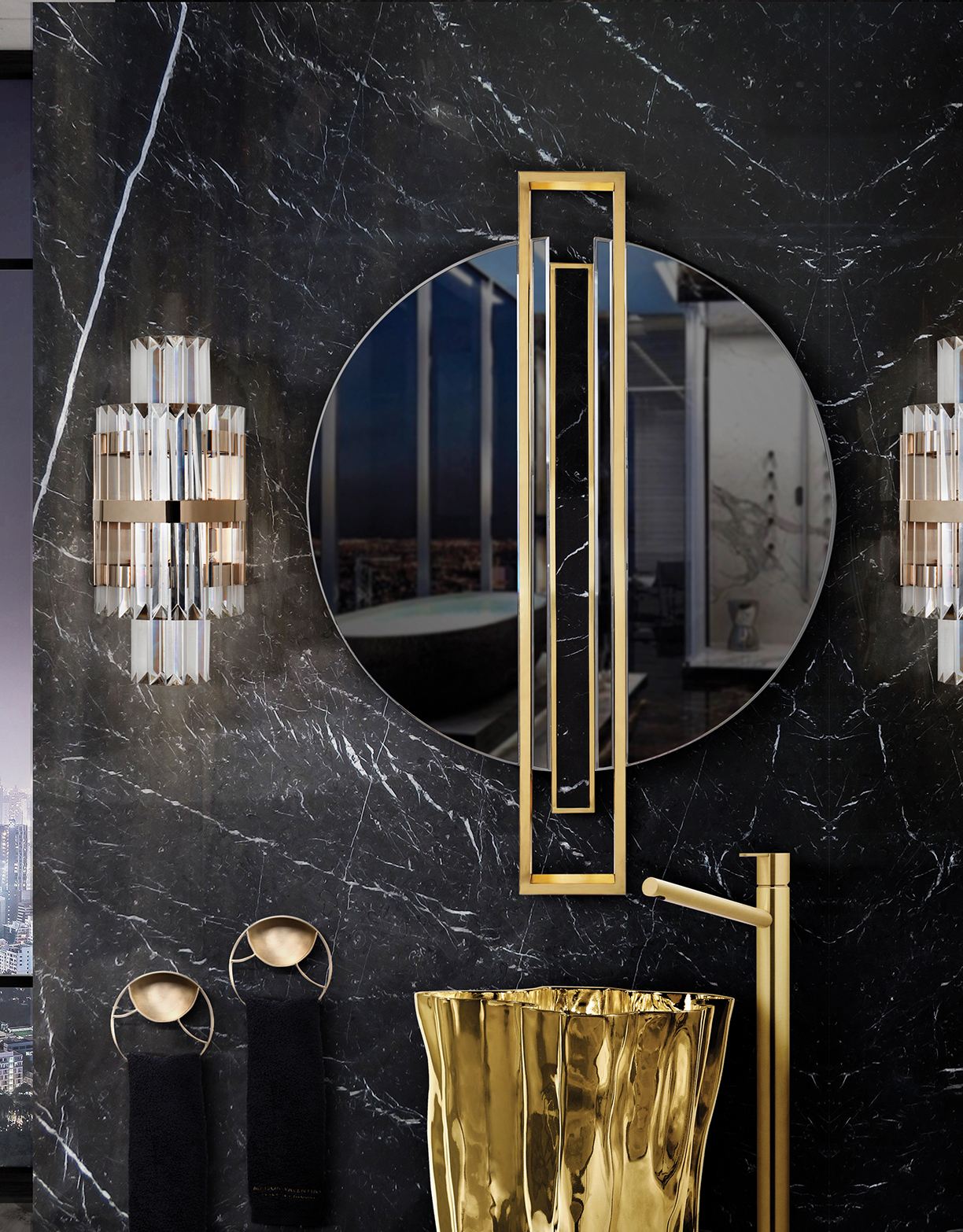
Rich Midnight
Because of the cleverness of Rats, the year of the Rat is said to encompass wealth and rich fortune. Rich tones, such as reds, deep blues, and metallic shades like gold are perfect color choices to represent this characteristic.
According to Chinese culture, the Rat is also associated with “midnight hours,” which in design terms can be interpreted as the color black, a great complementary shade to the other rich tones.
Whether these colors are utilized in furniture, accessories or painted walls, showcasing these tones throughout will help create a cohesive look throughout your space.

At left photo courtesy Maison Valentina.
Above photo courtesy Orchid Furniture.

Fine Creativity
Because of their independence and imagination, Rats often display characteristics of creativity and artistic excellence, as well as an affinity toward fine details.
To accompany the overall color palette, pieces should showcase creative design and fine, intricate detailing.
This can be found in a framed artwork or a handcrafted piece of furniture, no matter its style.
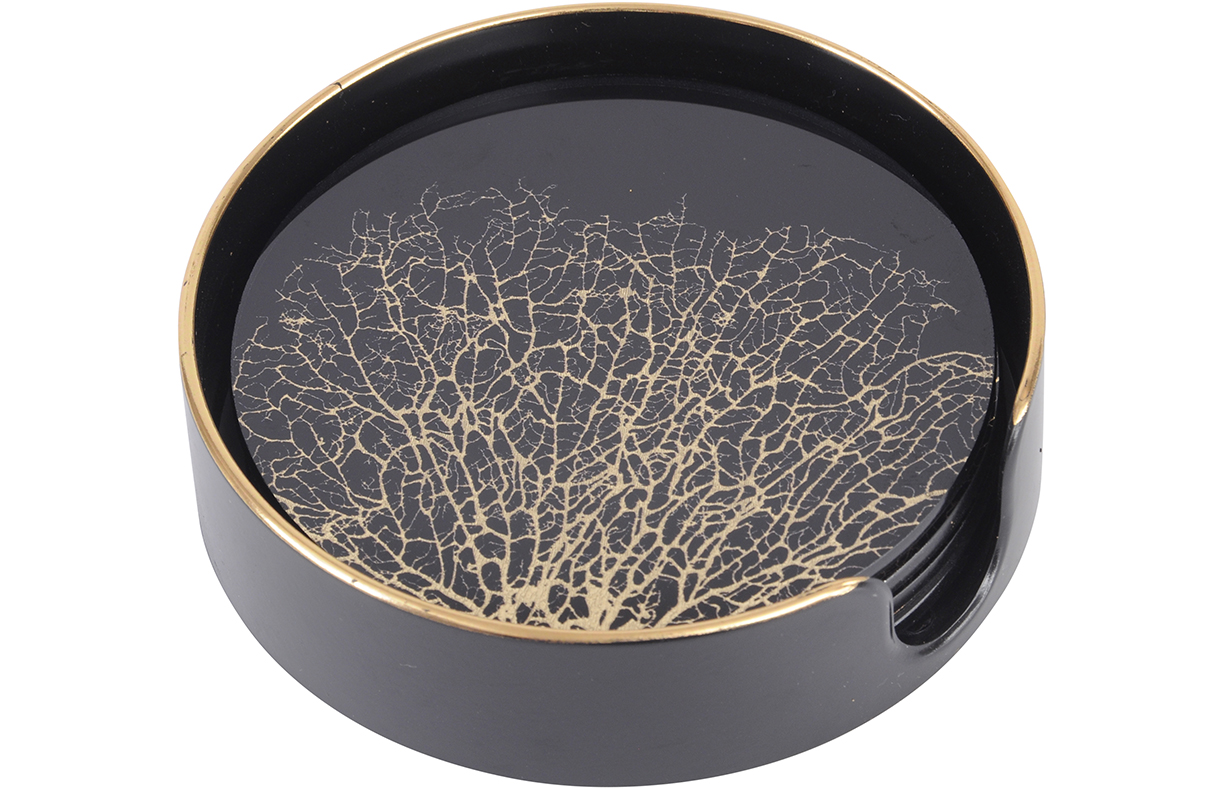
At left photo courtesy Orchid Furniture.
Above photo courtesy Artisanti.


